#historical rabbit hole
Explore tagged Tumblr posts
Text
Hal Gates = Henry Avery
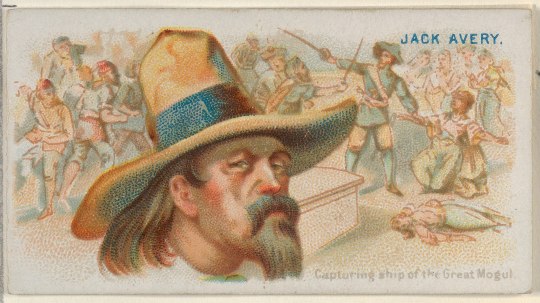
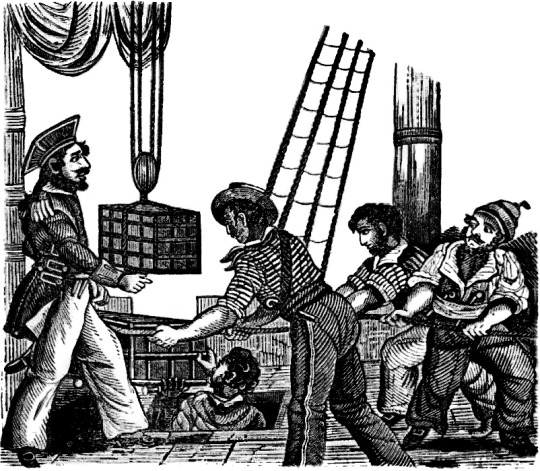
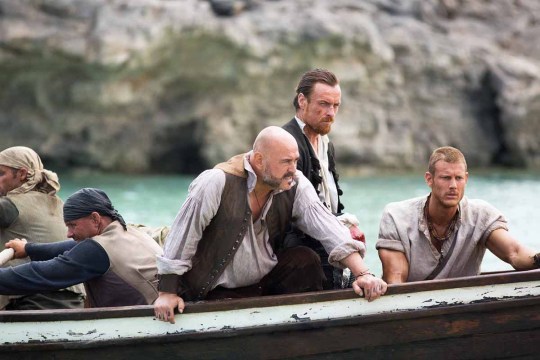
So, I've seen the theory that Hal Gates = Henry Avery, and I laughed at it until I did the research.
And holy shit, it fits.
What made me start scratching my head was when I stumbled upon a second draft script for the pilot that is a little different from what aired. It straight up says that Hal Gates is in his 60s in Episode I/1715. For some reason, I figured him a bit younger, but since Mark Ryan was only 58 when the show started airing...it starts to make sense.
Henry Avery was (probably) born in 1659. He'd be 56 in 1715.
Short history: Henry (Hal?) Avery was a British-born sailor who spent some time in the Royal Navy as a master's mate, became a privateer, and then a pirate captain when the crew of his ship mutinied and elected him. Then he became the most successful pirate of his age, the "Arch Pirate," and the subject of the first-ever worldwide manhunt after only two years as a pirate captain.
Then he escaped with his loot around 1695, twenty years before Black Sails begins, never to be seen again.
But there are theories that he disappeared to New Providence Island.
(More on that below the cut). Isn't that fascinating? We don't know where Hal Gates comes from, but we know he's been around for quite awhile. He's the right age (practically spot on). Hornigold implies that Gates has been at sea for around 50 years, which would mean he first went to sea around 1665, give or take a little. The first mention of Every at sea is around 1671, but what's 5-6 years when you're rounding?
The Black Sails universe credits Avery/Every as one of the founders of the Nation of Thieves, saying "this is a place for free men," on New Providence Island. He's also the man who found Skeleton Island.
We know Hal Gates sailed on his crew and had his journals (his "prized possession," which he gave to Flint for safekeeping. Why give those to someone who was supposedly a minor member of his crew (someone who was "terrified Avery knew his name")? That doesn't add up very well. Why would Gates even have those journals?
"They say it started with a man named Henry Avery. Sailed into the port of Nassau, bribed the colonial governor to look past his sins, encamped his crew upon the beach, and thus began the pirate issue on New Providence Island." (Thomas Hamilton to James McGraw)
Avery vanishes into thin air, after supposedly giving Hal Gates his journals and leaving some of his crew on New Providence Island, including - presumably - Gates. Unless, of course, he is Hal "Gates." Then we've definitely seen him, the man who didn't really want to be a pirate captain until it was thrust upon him. That's a weird attitude, unless, of course, he's retired and is just going to see as a quartermaster because he missed the action?
More Avery/Every history beneath the cut.
Black Sails spells his name as Avery, though the common spelling is actually Every. So, what's his story?
Henry Every, also known as Henry Avery, Jack Avery, John Avery, Benjamin Bridgeman, or Long Ben, was the "Arch Pirate" or "King of Pirates" in his day.
He was probably born in Newton Ferrers, England (near Plymouth), in August 1659. His last name may have been spelled "Evarie" at this time.) Sometime between 1671 and 1689, he joined the Royal Navy under the name Henry Every and made it to the rank of master's mate before being discharged in 1690.
He also married to Dorothy Arther in 1690. Even in the navy, he was known as a family man, sending his money home instead of wasting it.
Then Every joined up with a new shipping company, and became first mate on a privateer warship, Charles II. The Spanish Expedition Shipping company was basically a bunch of English privateers who headed out to help Spain (then an English ally) hurt the French (never an English ally) in the West Indies. But Spain didn't deliver the promised letter of marque, failed to pay them, and left them sitting around as virtual prisoners. The crew of Charles II mutinied. Next you know, Every was unanimously elected captain and they changed the name of the ship to Fancy.
Over the next two years, Every and his crew embarked on a legendary series of raids that culminated in him commanding a squadron of pirate ships and taking a prize worth about £600,000 (about $135 million today). This was a 25 ship convoy owned by the Grand Mughal (Emperor), and it was the biggest prize ever taken by a pirate at the time.
The result? The first ever worldwide manhunt for one Henry Every. Britain's privy council and the East India Company offered a bounty of £1,000 (about $224,000 today) for his capture, plus a free pardon to informers.
It was due to his actions that Parliament declared pirates hostis humani generis ,or enemies of all mankind.
What happened to Every after this? What we know for sure is that he disappeared, forever to be the one pirate who got away scott free with his treasure. Sightings were reported for years, but none were reliable. Some say he died in poverty after squandering his treasure or being unable to sell it. But there's a strong theory that he disappeared in a place we all know very well: New Providence Island.
According to this theory, in Every and Fancy headed to St. Thomas and sold some of their treasure. Anchoring about 50 miles off New Providence Island, some of his men went to talk to the governor and ask leave for the crew to come to the island in exchange for hefty bribe. Their captain, "Henry Bridgeman" promised the governor a gift.
Every's crew spent months in the Bahamas and Fancy was stripped of everything valuable, ending up running aground and sinking, perhaps at the governor's orders. Eventually, the governor learned about the price on Every's head and put a warrant out for his arrest, but he seems to have tipped off the crew. Of 113 men, only 24 were captured (and 5 executed). Every was never seen again, having told his men multiple stories about where he intended to go.
And then he vanished, never to be seen again.
Unless he didn't.
22 notes
·
View notes
Text
Haven't been able to think about anything other than the victorian/edwardian/WW1 twink and his 80's punk almost-boyfriend for a week, send help
#this tv show has consumed my every thought#it's like tumblr catnip#go watch it#it will eat away at your brain#there's also a butch lesbian butcher#an autistic manga loving weirdo (my beloved)#and a badass psychic who's also a mess#WHAT MORE COULD YOU POSSIBLY WANT?#updating the post bc the reblogs lead me on a WILD wiki rabbit hole about the eras of England#okay so Edwin is born in 1900 which means he was born 1 year before the end of the Victorian era (1837-1901) so technically he's a victoria#baby who lived his childhood in the Edwardian era (1901-1910) and his teens in the pre/start of WW1 era (started in 1914)#until he was killed :( in 1916#so my boy here lived though MANY historical events and time periods#shout out to my victorian/edwardian/WW1 twink#history is very fun and this is why i love this website bc where else would i have to do research for my blorbo?#I do however find it very funny if Gaiman named him Edwin in honour of the Edwardian time period he grew up in#I love that man and it wouldn't surprise me if he turned out to be a history nerd (affectionate) like the rest of you#dead boy detectives#edwin payne#charles rowland#crystal palace#niko dbd#dbd#please feel free to dm me about history i adore it
965 notes
·
View notes
Text

Are there any written accounts of the lives of hairdressers of the nobility in the 18th century? I always wondered about them
#or were they also part of the nobility? I must once again fall into a historical rabbit hole#sketch#illustration#traditional art#artists on tumblr#my art#art#wigs
56 notes
·
View notes
Text
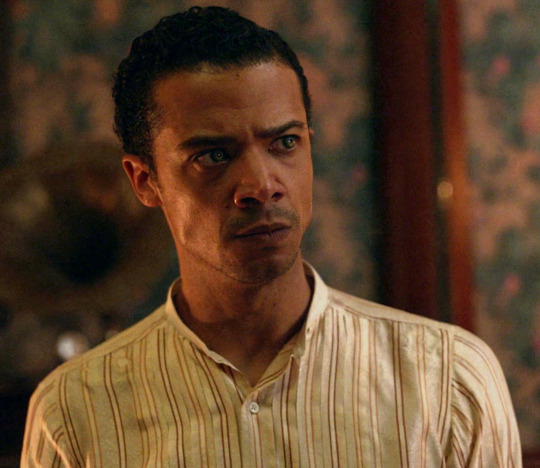
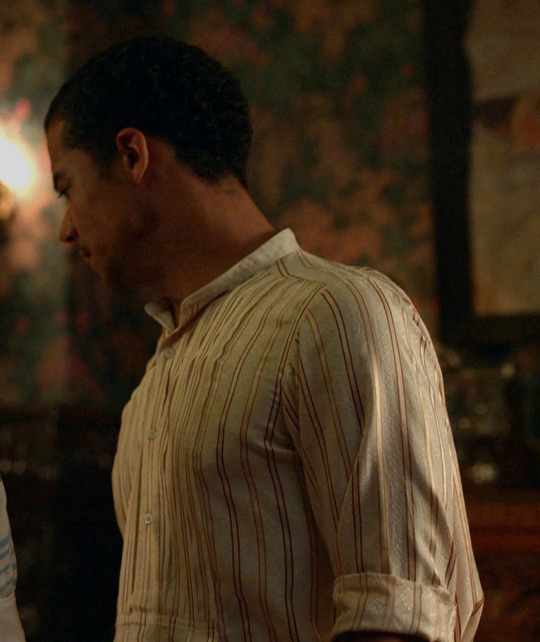
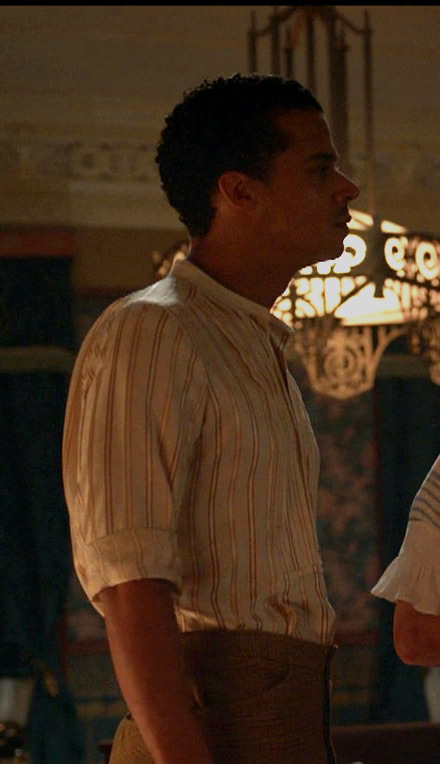
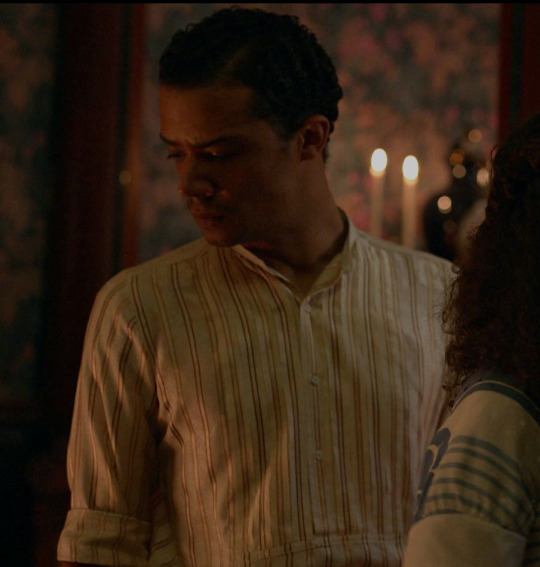
Nerdy post about this shirt below the cut.
I'm not a dress historian, but I do have 10+ years of experience sewing (mostly as a hobby). Here are some things I can tell you about it.
First, what we can see from the show: -It was made to be worn with a removable collar*. -The Front opening doesn't go all the way down*. -It has a pleated bib piece in the front. -It has pleats below and to the sides of said bib. -It has a very short yoke (at first I thought it had a saddle shoulder because the stripes of the yoke and the stripes of the sleeves match perfectly... mwah chef's kiss).
*these seem to be common features of shirts from mid 19th century to mid 20th century.
Here is what I imagine the whole thing looks like
[Note: when I first posted it, I forgot to delete one line on the side view that divided the yoke]

I think the back piece is gathered, but maybe it has a center pleat or two pleats above the shoulder plates. So I assume the sleeves echo this and are gathered at the cuffs too (it may have two pleats instead). I imagine it has double cuffs, meant to be worn with cuff links. The length was a guess on my part, but shirts of this time seem to have been longer than modern ones. The gusset where the front and the back piece meet at the bottom is common feature of this kind of shirt.
And here is a detail of how I think the pleats work:

I'd bet the measurements of the bib piece are determined by the stripes of this particular fabric. The pleats could be thinner, wider, have a gap between them, etc. if the fabric were different.
Here are some real (I mean not costumes) shirts, similar to the one worn on the show:

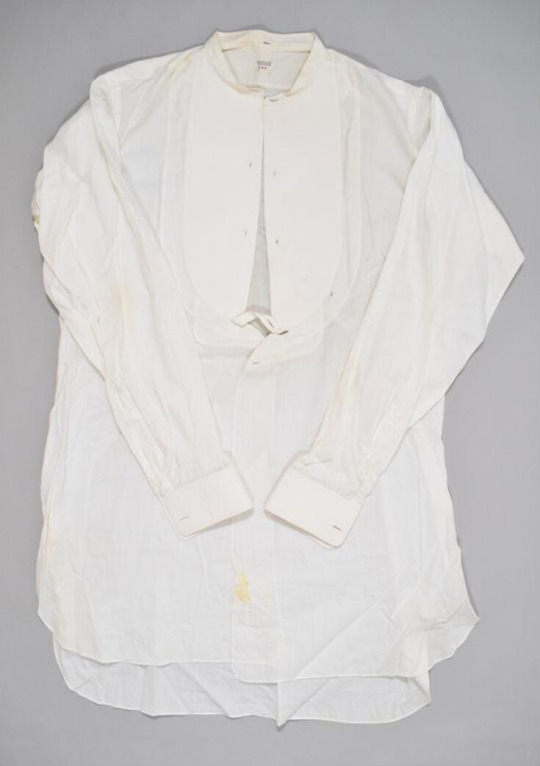

Made between 1900 and 1910. (source)
Made in 1953. (source)
Just listed as "Edwardian". (source)
If anyone wants to sew something similar, here is a drafting manual from 1890 (I think it's funny that it says the pleated front was fashionable 25 years prior but not anymore... and yet there are shirts from the 1970s in a similar style). But also you could frankestein it from a modern commercial pattern (make sure it has a yoke and a standing collar, tho). This video may also be useful.
... and that's all folks!
#interview with the vampire#iwtv#amc iwtv#amc interview with the vampire#costume design#historical costuming#edwardian fashion#sewing#men's fashion#fashion#louis de pointe du lac#carol cutshall#jacob anderson#whenever i think i might be too extra about something I remember sam reid bought a special software for his audition#i need someone to pay me for falling into rabbit holes
210 notes
·
View notes
Text
btw I also love that when Nell is dressed up femininely she does act like it's uncomfortable, because it's not her preferred style and she just doesn't like being in it, but there's no specific comments directed towards the corset/stays. I will die on the corsetry hill and it's refreshing to not see that particular piece of clothing not depicted as the devil's organ-rearranging torture device
#I'm not quite deep enough in the historical clothing rabbit hole to know the difference between corsets and stays on sight#but I am deep enough to know that corsets being evil is one of the biggest lies ever told#just because modern Hollywood uses them improperly doesn't mean that's how they were used historically#and even if there were some people back in the day using them improperly doesn't mean everyone was#they're literally just clothes#renegade nell#nell jackson#corset#stays#idk#costuming#historical fiction#martianbugsbunny reviews
25 notes
·
View notes
Text
Looking at the character inspirations (both confirmed by Oda and alleged) for Monkey D. Dragon and jfc I never realized the sheer concentrated amount of latin american revolutionary representation at work there.
Ernesto “Che” Guevara, Fidel Alejandro Castro Ruz, and José Gabriel Condorcanqui- better known as Sapa Inca Túpac Amaru II.
Like holy shit, my man.
#catch me in like… five different historical rabbit holes because of this#one piece#monkey d dragon#taurus snorts
9 notes
·
View notes
Text
I'm not in denial. I just refuse to accept that Peggy Carter, a character who canonically died of old age and was a young woman in the 40s, ever wore 60s and 70s fashions.
#peggy carter#I'm being silly#but one of the consequences of falling down the research rabbit hole for a very short historical period#is that you forget that History kept going#still cannot imagine Peggy in 60s styles#kind of a blessing that her only middle aged appearances in the MCU are in the 80s
17 notes
·
View notes
Text


#important historical discourse#polls#I had to look up bjds for something else I'm writing#what a rabbit hole
28 notes
·
View notes
Text
Have you ever thought a piece of art was so dang beautiful you were determined to waste precious time tracking it it down no matter what?
... Just me?
Lol ok
Anyway this painting was so fricking pretty I did just that. I wanted to find more reference images of escoffions and saw this pretty picture:
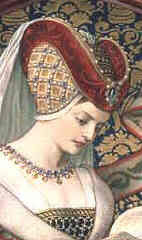
But it was so low res and just would not do. And I thought it looked cropped. So I searched more and discovered that in fact it had been cropped:
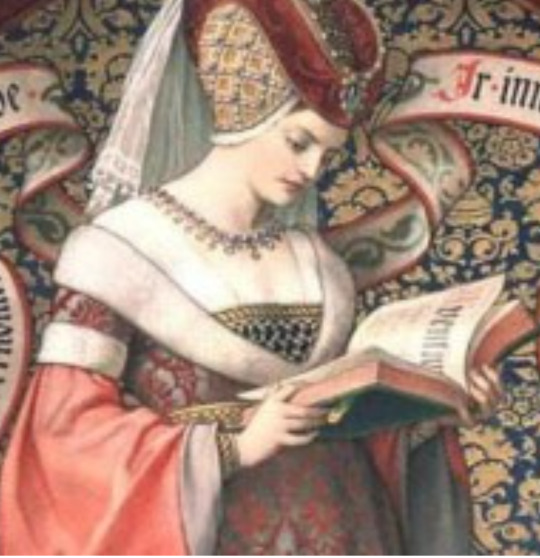
But that was still low res, plus all that was coming up was a cover for a certain book about medieval clothing, so I worried that the piece was a modern one commissioned by a specific person for their book. But I kept looking and lo and behold, it's a whole glorious mural!

It's called Lady Reading Tristan and Isolde and is from the 19th century.
I love it much. Also her escoffion is fabulous.
These are the efforts of my useless labor, but I thought it was so pretty you guys might want to see it's beauty also.
#lol why am i like this#neurodivergent rabbit hole#escoffion#medieval fashion#mural#German school#german art#19th century#1800s#19th century art#medieval lady#lady#painting#historical fashion#history#free image
23 notes
·
View notes
Text
i am once again getting confused by the various titles/romanizations for [ mochijun’s second main series w/ the vampires & vanitas ]. with the help of this thread & my own minimal knowledge of japanese + some googling, here’s what i’ve come up with:
ヴァニタスの手記 (カルテ) : original japanese title. directly, this would be “vanitasu no karute,” though the kanji for karute (meaning patient’s chart/clinical records/or here maybe doctor’s notes, in japanese) can also be read as shuki (meaning memo).
the case study of vanitas: from what i can tell, the main english translation title, used on the covers of the english manga + anime. plays into the doctor side of things with the “case study” bit.
les mémoires de vanitas: main french translation title. pretty straightforward, “the memoirs of vanitas”.
all good so far, but then here’s the bit that’s weird to me:
vanitas no carte: from what i can tell, an attempt at romanizing the original japanese title? bit weird to me since while “carte” *is* a french word (meaning map/card/menu?? do correct me if you know more french here) it’s not quite the same as karute (or shuki) in terms of meaning, even if the pronunciation is similar enough if you squint (and ignore the silent “e” in the original french).
vanitas no karte: even weirder as a romanization option. “karte” is a german word that from what i can tell means card/postcard, seemingly closer to the french “carte” than the japanese “karute,” even though i did see a claim in that thread that karute might’ve been taken from the german originally?? (and it is spelled with katakana in the original, typical for when japanese takes foreign words.)
in both vanitas no carte / karte japanese grammar is still clearly being used though, with the “の/no” possessive particle. it’s also used that way in this next one:
vanitas no shuki: clearly just a romanization of the original japanese, but using the kanji reading of “手記” > the listed “カルテ” reading.
—so i assume most english readers around here have been treating the carte/karte/shuki titles as romanized titles.
to be clear, this is not to say that any of these titles are wrong or that people are wrong for using any of these, i just find this to be a particularly interesting case for how words translate across multiple languages. the one question i still have (for any native/fluent japanese speakers out there, maybe?) is if there’s any more context for カルテ as a word. is it actually seen as a loan word, from the french/german? was it originally a loan word that’s so imbued in the language by now that some people don’t recognize it as a loan (e.g. cafe or kindergarten in english)? something else?
#tcsov#mochijun#the case study of vanitas#vanitas no carte#vanitas no shuki#vanitas no karte#i also don’t have a ton of knowledge of japanese romanization standards#at least historically#which was part of the motivation leading me down this rabbit hole actually#cause people use vnc so often but ‘carte’ just DOES NOT look like ‘カルテ/karute’ to me#language can be silly though#astronaut rambles
21 notes
·
View notes
Text
The Man O'War
One of the mysteries of Black Sails is where the Spanish man o’war captured in season 1 vanishes to after Captain Flint and his crew return to Walrus…but another mystery is exactly WHAT is this ship. I’ve seen her referred to as a frigate, but now that I’ve captured a good screenshot (season 2, episode 4), that this is definitely no frigate.

The man o’war has three full gun decks. Counting gun ports, it looks like each has approximately fifteen guns, plus a short gun deck back aft near the main deck. This averages to 45-49 guns per broadside, which makes this grand bitch not just a ship of the line, but a first rate ship of the line. That's the age of sail equivalent of a battleship! Take a look at the gif below of the man o’war savaging Walrus and Ranger.
(Frankly, if she was a frigate, I don't think Flint would've worried much; Walrus has the throw weight of a sixth rate frigate and would've stood a good chance; with Ranger along, they would've been just fine and no one should've panicked.)

So, what ship is this? The Urca de Lima was a real ship, though Urca was only a nickname for Santissima Trinidad, and she was part of a combination of two flotillas that made up the 1715 Treasure Fleet. This fleet consisted of eleven ships, of which at least two were ships of the line.
The first was ex-Hampton Court, a British built third rate ship of the line of 70 guns that was captured by the French then sold to the Spanish. Sources say that she was renamed Nuestra Señora del Carmen, but contemporary sources such as the governor of Jamacia, Archibald Hamilton indicate that this was a separate ship and the flagship of the second part of the fleet. (More on that in a moment.)
The second confirmed ship of the line was the French Griffon, which was the one and only survivor. (Cool fact: the captain of this ship was also likely the informant who gave Hamilton his information).
The third ship is the mystery ship that brought up the rear of the formation. This ship is harder to place, and was either a different "massive war galleon" or Nuestra Señora del Rosario, a third ship of the line. This may have been a third rate or fourth rate ship of the line, but sources make it very hard to tell. Given that the wrecks that have been found have never been positively identified, it's even harder to determine which ship was which.
Back to Black Sails. Historical evidence says that there wasn't a first rate ship of the line in the 1715 Treasure Fleet, but the show does also indicate that the Urca was traveling alone, so a bit of dramatic license says that we've got a first rater along for the ride. It's far from outside the realm of possibility, given the contemporary evidence that the Spanish definitely did use ships of the line as escorts for treasure ships.
I think it's safe to say that the ship isn't Hampton Court, however. An ex-British officer like James Flint would 100% recognize Hampton Court, who would've been captured (1707) after he left England but was a distinctly British design. Additionally, the characters continuously refer to her as a Spanish man o'war, which indicates she's Spanish-built.
Spanish-built ships of the line with three decks have 94 guns or greater. Until 1700ish, they frequently were referred to as galleons, a term that faded out of use and was replaced by navíos. If I'm going to be a real history nerd, Spain didn't really have a three deck ship of the line in this era; they'd scrapped the only one they had in 1705, Nuestra Señora de la Concepción y las Animas. But prior to scrapping, this ship was sent to the colonies to harass settlers around Panama, so she was on the right side of the world in the early 18th century.
Historically speaking, Nuestra Señora de la Concepción y las Animas (Our Lady of the Conception and of Souls) is the best candidate for the Man O'War in Black Sails.
In-universe speaking, that big bitch is a three deck, first rate ship of the line of somewhere between 94-100 guns, just based on the number of gun ports and the mincemeat she makes of two ships at the same time. Why did she vanish? Probably because it'd be hard as hell for anyone to beat Flint if you let him keep that ship, and Woodes Rodgers would've had a much harder time taking Nassau when she was protected by a ship of the line.
Have you seen this post before? Probably a close cousin of it. Dimwit me deleted my tumblr and had to remake it.
Additional sources:
1715 Treasure Fleet Information
Ship resting places, armament, and educated guesswork
Archibald Hamilton's information
#black sails#captain flint#ships#age of sail#the man o'war#james flint#history#historical rabbit hole
23 notes
·
View notes
Text
Research Rabbit-hole Tag Game!
Another day, another made up tag game!
Rules: As writers, we all end up researching random things for our writing. Share the latest thing you've researched for your fic and tell us something you learned!
Thank you for the tag @holy3cake! My research is not as... interesting... as yours lol! But I have done some deep dives for my fics!
What I Researched:
Do fireflies exist in the UK?
What kinds of trees/shrubs/flowers are native to the UK and would have been common in the 9th/10th century
Anglo-Saxon politics
Digging through the history of Mercia and the various kings
Foods available in that time period and part of the world
Medicinal plants commonly used in that region/time period
What I Found Out:
Fireflies as we know them in the United States do not exist in the UK. There are 165 species of fireflies in the United States. For most of these species, is the males that fly and flash, and the females stay on the ground, and also flash but not as brightly. In the UK, they have only one species of firefly commonly known as the glow-worm (Lampyris noctiluca). In this species, the adult females look like juveniles, and they are flightless and stay on the ground, flashing the lights to the males, which have no light of their own in contrast to most other species of firefly. (Source)
The RHS website is a treasure trove of trees and shrubs native to Great Britain. These are plants that would have been common in gardens and forests during the medieval period. Another website listing common wildflowers native to the UK. There are other websites listing native flower species too.
There are numerous websites that go into detail about Anglo-Saxon politics and history. Mercian Kings (link), Anglo-Saxon names (link), Wikipedia page about Mercia (link), Wikipedia page about Danelaw (link), Historica Fandom Wiki has lots of info (link), Thegns of Mercia blog is a treasure trove of information (link)
The Regia Anglorum website in particular is another absolute treasure trove of information about Anglo-Saxon England, and I HIGHLY RECOMMEND visiting this website to learn about this time period!! They go into detail about history, weapons, warfare, drafts, religion, villages, places, foods, medical herbs, and just so much stuff!!
The Viking Answer Lady is another absolute treasure trove of information all about the Danes and the Viking Age!

No pressure tags: @thelettersfromnoone @thenameswinter99 @bagheerita @timetravelingpenguin1066 @paula-in-dreamland
@alexagirlie @gemini-mama @sihtricfedaraaahvicius @synintheraven and anyone else who sees this and wants to do it!
#writing resources#anglo saxon#historical resources#tag games#research rabbit hole tag game#fanfic resources
8 notes
·
View notes
Note
What’s the significance of each color in Ancient Greece? So green is the only neutral color and it represents mostly natural and earthy things, thank you for telling me that part !! Anyway, as for my Hyacinthus design’s hair being brown, it’s due to the combination of it being a fairly common interpretation of his appearance and also because I find I like how it looks with his skin tone and the purple of his eyes.
Okay, firstly; thank you so much for answering my question too!
Admittedly you can't beat out good, old fashioned colour theory so that's completely fair haha! I still think it's very interesting that brown became the common interpretation of his features so I'm always glad to hear other people's view on it <3
With respect to what colours meant or symbolised in Ancient Greece, it's a super fascinating topic because the Ancient Greeks had a very different perception of colour than how a lot of people - and in this case I'll generalise and say english-speaking people - perceive colour. In a lot of languages, especially older ones, colour wasn't just a way to describe the physical perceptional reality of an observable object (that is, the light reflecting off the object that gives it its perceived hue - the way we perceive colour now) but colour was also used to describe the way in which the people experienced the world. A really good way to think about it is now, if you wanted to distinguish between two types of blue, you would instinctively make a distinction between their shades ("This blue is darker/lighter!") whereas these older people would distinguish based on things in their present, shared world that best matched what they were being asked to describe ("This blue is like the sky/the sea!")
That's an important concept to keep in mind because ancient greek was very unique in that, in addition to this concept of colour being completely intertwined with physical objects (and therefore also acquiring the properties of these objects in the minds of the people), the ancient greeks also did not particularly care about distinguishing between different colour hues (that is, differences in specific individual colour) but rather they were entirely focused on a colour's value - that is, whether it was considered light or dark.
Taking all of this into consideration, the question 'what is the significance of the different colours in Ancient Greece' is a bit of a tricky one to answer because unlike say, Ancient Egyptian which has very clear colours (red, white, green), very clear physical objects that give those colours their property (the desert sand, the sun, people's skin) and very clear symbolic meanings that arose from the natures ascribed to those physical objects due to their influence on the people's lives (hostility, power, new life), Ancient Greece's colours and the perception of those colours was much more abstract and poetic, contingent on their understandings and perceptions of things like light and dark, the sense of touch or taste (sweet and bitter/wet and dry) and what quality was ascribed to the object whose colour is being perceived. Colour was a matter of cosmology, of philosophy and there were many different schools of thought on it from Empedocles' physicalist theories to Anaxagoras' realist theories.
All of this is to say, take the meanings I outlined in this handy-dandy table with a tablespoon of salt! These are based on my understanding of the language used to describe things in classical writings that have survived and my own bias towards Empedocles' physicalist theory of colour and the nature of colour which I also think is very useful for people into greek mythology as a whole due to it making clear links between various gods creating things from mixtures of the four basic elements of nature and the colours that are the result of these mixtures.
I hope this helps even a little and I very much encourage you to do some research into different Greek schools of thought when it comes to colour and the perception of colour as well as how colour affects/reflects the innate nature of all things!
(Also, slight extra note, I left out Kokkinos (scarlet/blood-red) from the table because I didn't really think it was relevant for this outline despite it definitely being an ancient colour. It's a bit difficult to find examples of it with the kind of descriptors Empedocles outlines and I don't want to make assumptions based on third hand knowledge on the greek concept of the nature of things. I'd like to believe it was addressed in more detail in Empedocles' original document - only a fragment of the original some two thousand lines have survived after all - it is confirmed that Empedocles spoke on the recipe for blood and flesh, an equal mixture of all four elements as opposed to bones' four parts fire, two parts earth and two parts water (which is why bones shine white, there's more fire than earth or water) - and I don't want to conject or make assumptions.
I also left out Erythros or basic/primary red according to Plato's list of basic colours because that seemed to have specifically been preferred by Egyptian Greeks according to linguistic data. If I opened up that can of worms with respect to the shared Egyptian-Greek colour language including the way the Greeks like many early peoples did not culturally perceive blue until the invention of Egypt's blue dyes then I would be writing forever and you would never get an actual clear answer about Greek colour symbolism separate and apart from Egyptian cultural influence lmfao. )
A few of the documents that helped me consolidate this information include Sassi's 2022 Philosophical Theories of Colour in Ancient Greek Thought and Ierodiakonou's Empedocles on Colour and Colour Vision. There are also a fair few translations and discussions of the fragments of Empedocles' On Nature still floating about - my copy is a somewhat archaic volume of Leonard's 1908 translation but I never went out searching for updated interpretations and translations of the text since its constantly referenced in perceptional philosophy papers LOL
Anyway, yeah, hope this helps! :D
#ginger rambles#ginger answers asks#I don't know if this is what you wanted but I really really hope it helps!!#I wish I was able to find a way to actually have the table in this response but I'm just not good with stuff like that so I just decided#to link it instead; hopefully that's not too troublesome#There's a LOT to talk about when it comes to the greeks and their perception of colour#The discussion of colour and how languages evolved to accommodate them is also a very fascinating thing#Yes I am a historical linguist how did you know#Both kyanos and porphyrous are really fun because you can tell they were adopted later#because they come from the names for gemstones that were already in circulation and trading as opposed to words unattached to an observable#tangible feature in the world#Like pyrros is named after fire vs kokkinos which is named after the holly seeds#that were grinded up to make red dye that they used for their clothing#which is another reason I chose to use pyrros over kokkinos on the table#Seriously though#This stuff is mad interesting I highly suggest you take a day and just go down the rabbit hole a bit#Even small things like this can help massive recontextualise the often distant and detached way modern audiences are prone#to treating mythologies from the cultures that they were deeply ingrained in#greek mythology#linguistics#I guess LMFAO#Cosmology#Extra secret fun fact#My Hyacinthus is a realist aka he doesn't believe in all this four elements stuff#He quicker subscribes to the realist school of thought made apparent by sticks in the mud like Anaxagoras and Parmenides#ginger chats about greek myths
7 notes
·
View notes
Text
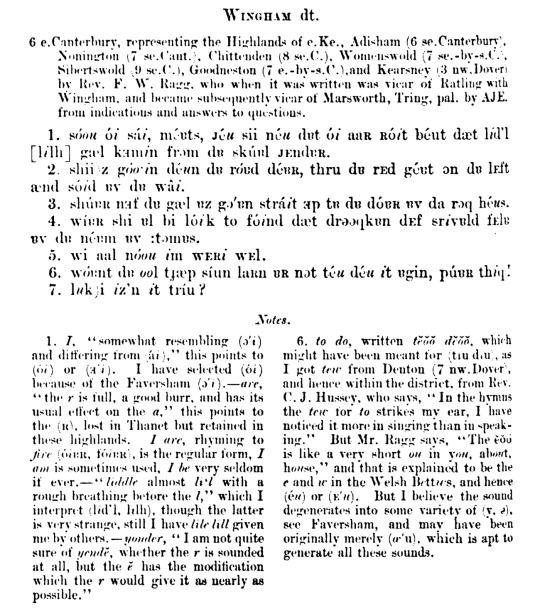
Hornblower but I make him talk like this
#yeah yeah this is a rural/working class accent and he's a middle class doctor's son i know#at least it could explain the rhotic slip-ups committed by ioan gruffudd in the show#(which are my beloved btw <3 choosing to consider them conscientious objection to the most english guy to ever english)#(i know that's absolutely not what they were but listen. radical linguistic praxis makes it bearable okay)#anyways i'm sure that hornblower has *some* kentish features in his speech#they're all so mean to him about being the son of a country doctor he has to show a slight phonological coloring in some situations#but also for legal reasons this is entirely a joke#i do think it's a pretty dialect though! i like the way it sounds when i try to read the scrunkly pre-ipa here#perce rambles#adventures in historical sociolinguistics#<- making this a new tag because i feel like it's its own rabbit hole#percy yells at cecil scott
8 notes
·
View notes
Text
FRUK Week 2024- Day 3: Please don't say you love me (485 words) by ambeestone Chapters: 1/1 Fandom: Hetalia: Axis Powers Rating: Not Rated Warnings: Creator Chose Not To Use Archive Warnings Relationships: England/France (Hetalia) Characters: England (Hetalia), France (Hetalia) Additional Tags: FrUk Week, fruk week 2024, Medieval, Angst, Historical Hetalia, i loved this prompt so much omg i love thinking about this fruk headcanon, that they have to be countries at all times they cant fall in love like normal mortals Summary:
A short drabble for FRUK week! It's the 1400s and Arthur is about to board his ship back to England. Saying goodbye to Francis is especially hard this time, especially after this rare moment of peace and festivities in medieval times.
@aphfrukweek here's my entry for day 3!
#i went down the rabbit hole for 1400s history a bit just now lmao#anywayyssss finished <3#fruk#my posts#hetalia#hetalia fanfiction#my writing#medieval fruk#historical hetalia#frukweek#frukweek2024#fruk week#fruk week 2024
9 notes
·
View notes
Text
This is bothering me and i gotta know.
#i was thinking about it last night and went down a rabbit hole#and while google did not help i am wondering based on historical context#if this is like a canadian/british saying#but not one that 'Mericans are familiar with#but idk
3 notes
·
View notes